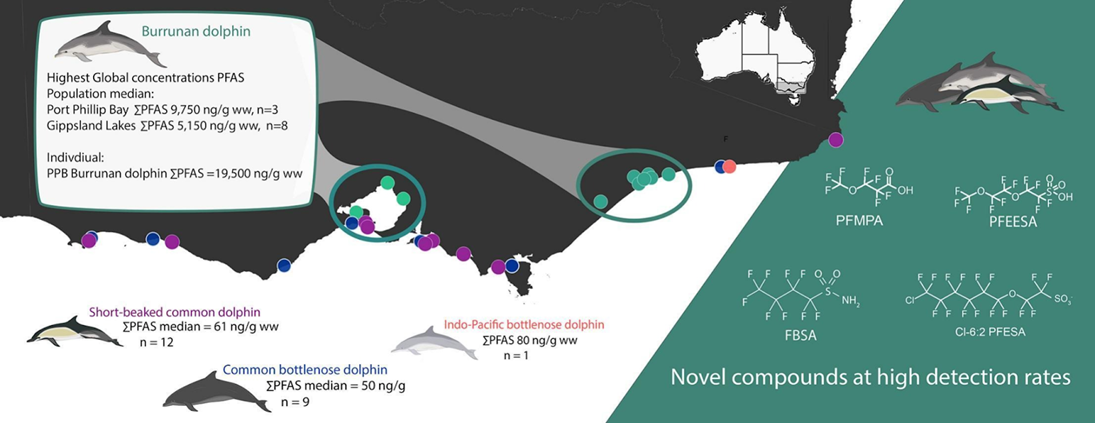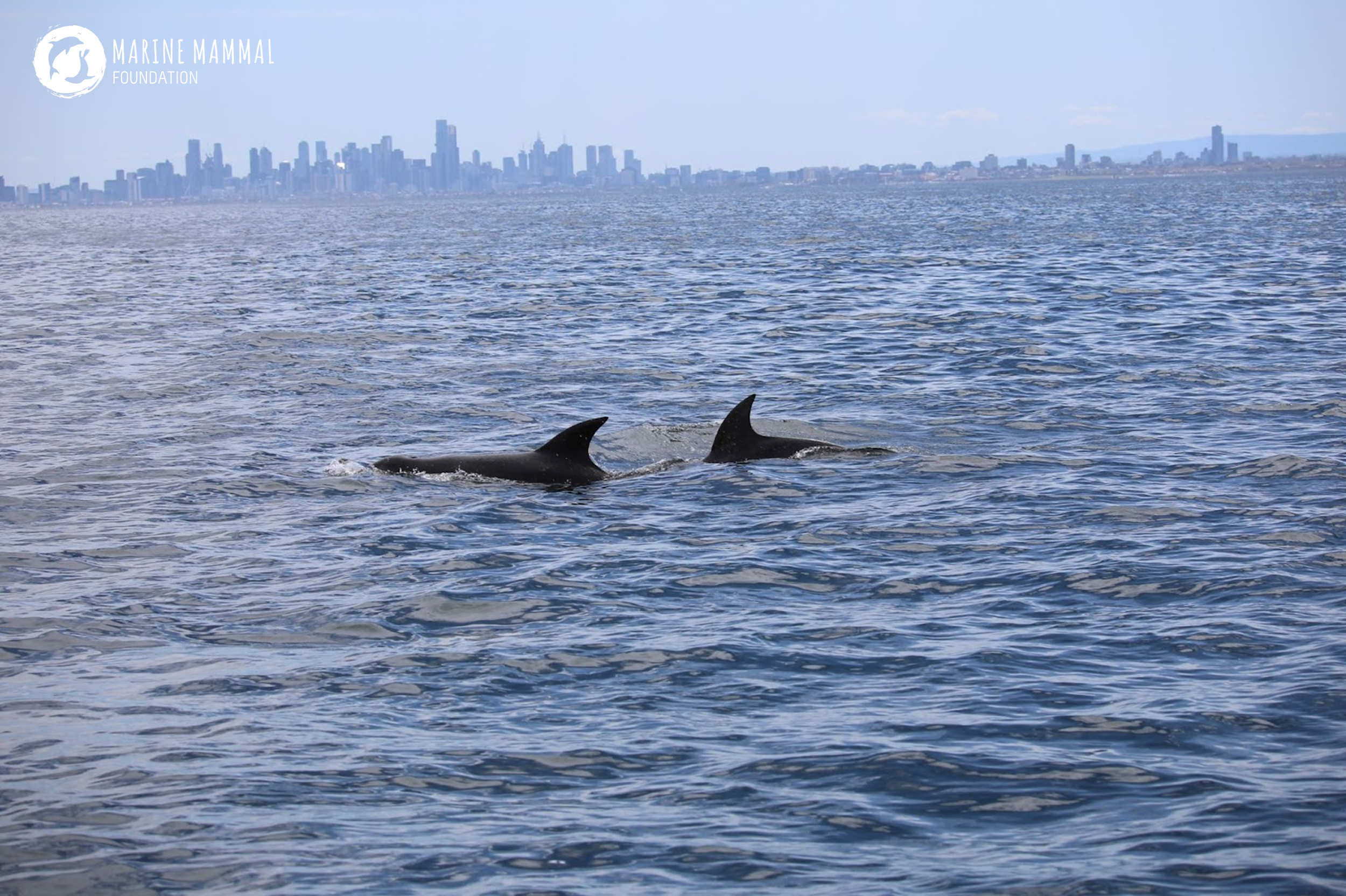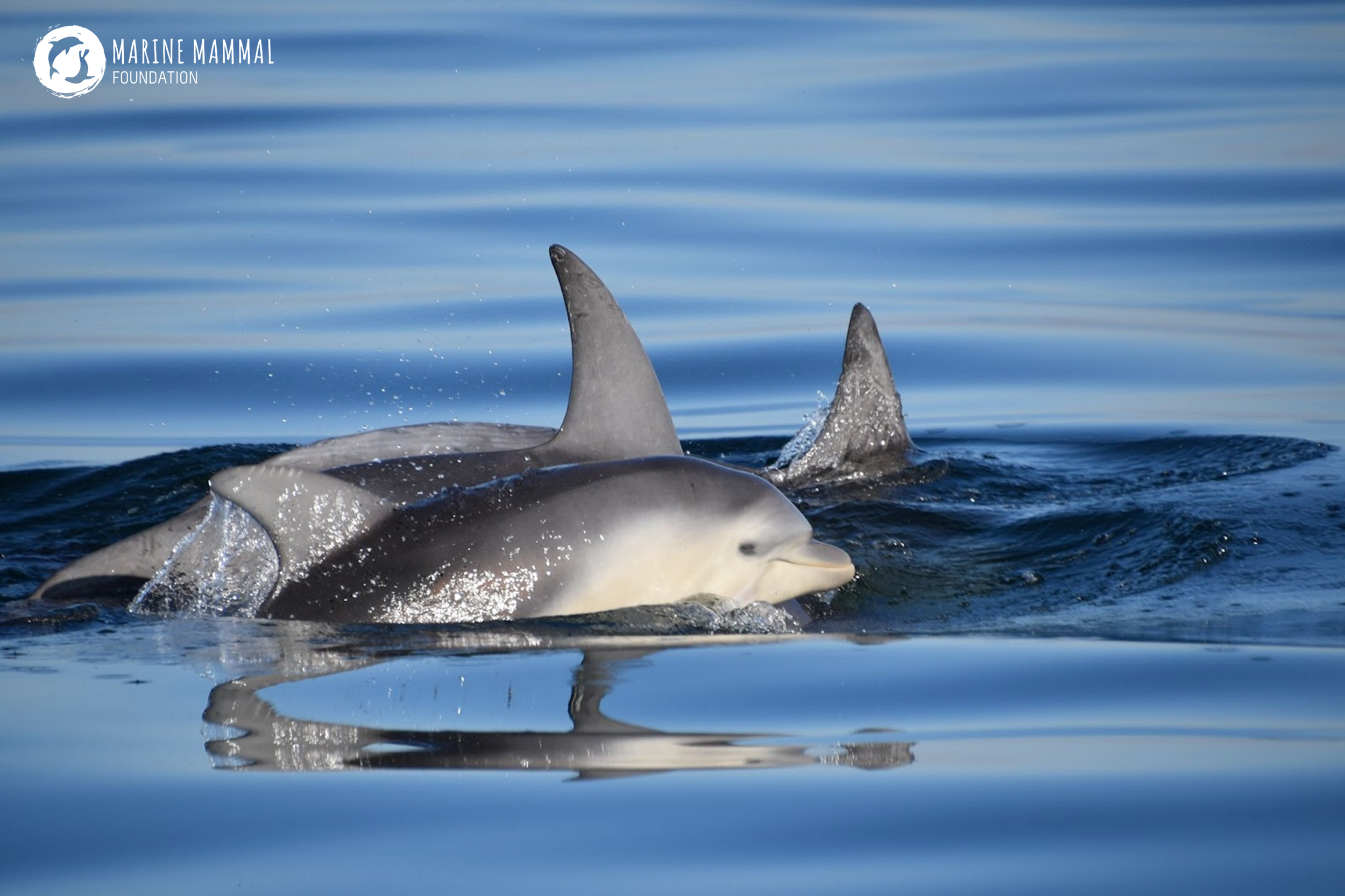Threat to Critically Endangered Dolphins: Unprecedented Levels of Harmful 'Forever Chemicals' Found in Australia's Burrunan dolphins
In a collaborative new study published in Science of the Total Environment, conducted by the Marine Mammal Foundation, RMIT, and the University of Melbourne, researchers have uncovered alarming concentrations of per- and polyfluoroalkyl substances (PFAS), commonly known as "forever chemicals," in the critically endangered Burrunan dolphins of south-east Australia. This research, led by Chantel Foord, identified the highest global concentrations of legacy PFAS ever recorded in dolphins, as well as detecting new and emerging compounds.
Lead researcher Chantel Foord, PhD candidate in the Ecotoxicology Research Group at RMIT and Marine Mammal Foundation, said “We investigated PFAS liver concentrations in 38 dolphins across four species stranded along Victoria's coastline and the results were both globally significant and of concern. Not only did we find the highest levels of these man-made toxicants in a species that is already critically endangered, including in a newborn and juveniles, a particular individual from our local Port Phillip Bay population had PFAS concentrations almost 30% higher than any other individual dolphin reported globally.”
PFAS are a group of chemical compounds used globally since the 1940’s, they have extremely high stability with a strong water and oil repellent nature lending them to a wide range of uses. In Australia, PFAS have been imported for use in products like fire-fighting foam, mist suppressants, food packaging material, cosmetics, electronics and more. Whilst there is international regulation of PFOS, PFOA and PFHxS, the Australian Government has yet to ratify the United Nations Stockholm Convention in full, enabling this import.
Major sources of PFAS to the aquatic environment have been attributed to manufacturing effluent, wastewater treatment plant discharge, urban run-off, landfill leachate infiltration, heavy use of firefighting foams on adjacent land, and to a lesser extent, atmospheric transfer. There is evidence of bioaccumulation and biomagnification of PFAS in top order marine mammals globally, such as in seals, otters, whales and dolphins. Recently, concerns have been raised about the impact of PFAS exposure on both human and environmental health, with studies finding links to immune suppression and immunotoxicity, liver toxicity, altered thyroid function, developmental issues, and cancer in organisms ranging from amphibia, fish, and mammals.
In this ground-breaking research, Foord highlights the mystery behind the high concentrations reported in the study, as no PFAS manufacturing occurs in Australia. She emphasized the need to identify the sources and inputs into waterways and understand how these chemicals behave in the environment.
“For the first time in this species, and dolphins within the region, we investigated 25 PFAS’s, including new and emerging compounds. Whilst we would expect higher concentrations in locations where these chemicals are made, the question is; without manufacturing occurring in Australia, why are we recording these alarming PFAS levels? Further, how are they going to impact the viability of these dolphin species and populations?” she said.
The study also revealed emerging contaminants in the environment, indicating that newer replacement chemicals are already bioaccumulating through the food web to the dolphins.
The Burrunan dolphin was only described as a separate species in 2011 by Marine Mammal Foundation’s Director, Dr. Kate Robb, a co-author of this study, and is already listed as critically endangered in Victoria under the Flora and Fauna Guarantee Act (1988). With just two small known isolated populations in Victoria, Port Phillip Bay and the Gippsland Lakes, the populations are already at high risk of localised extinction.
Dr Kate Robb said “With only 250 individuals across these populations, increasing our understanding of threatening processes is absolutely crucial for the conservation and protection of the Burrunan dolphin, and in the management and mitigation of those threats. Given the current immune compromising risks and health impacts associated with PFAS exposure, it is incredibly concerning that these Burrunan dolphins studied have the highest level of documented PFAS worldwide, especially due to their high vulnerability and risk of extinction. This study highlights how crucial it is that we continue our vital research to ensure the future of the species.”
For more information please contact research@marinemammal.org.au
LINKS:
Foord, C.F, Szabo, D., Robb, K., Clarke, B.O., Nugegoda, D. (2023) Hepatic concentrations of per- and polyfluoroalkyl substances (PFAS) in dolphins from south-east Australia: Highest reported globally. Science of the Total Environment. https://doi.org/10.1016/j.scitotenv.2023.168438
The Conversation: Australian dolphins have the world’s highest concentrations of ‘forever chemicals’. https://theconversation.com/australian-dolphins-have-the-worlds-highest-concentrations-of-forever-chemicals-218253
https://phys.org/news/2023-11-critically-endangered-victorian-dolphins-highest.html




